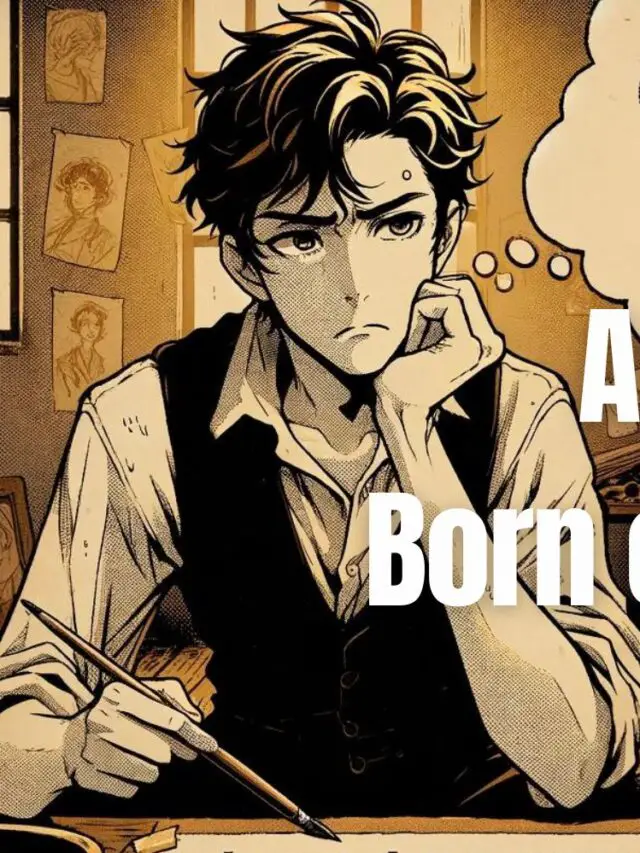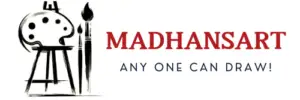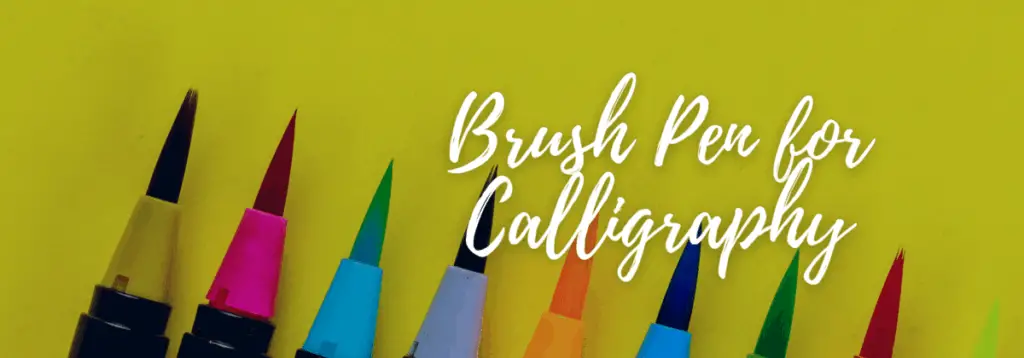Brush pens are an excellent way to add a personal touch to handwritten notes and correspondence. They have found their way into the world of calligraphy. They are becoming increasingly popular with people who want to add a unique flair to their beautiful writing.
Table of Contents
Can you Use Brush Pen for Calligraphy?
Brush pens are great for calligraphy because the bristles distribute the ink evenly across the width of the pen tip. This makes it easy to produce thick and thin strokes without changing your writing angle.
The ink flow from a brush pen is much smoother than a regular pen, giving your calligraphy a more polished look.
The brush pen allows for precise and easy control of the brush, allowing beginners to create beautiful calligraphy and helping experienced calligraphers produce stunning work more efficiently.
We recommend using a pencil to practice your strokes before moving on to a brush pen if you’re starting with calligraphy. Once you’re comfortable with the basic strokes, you can experiment with different pens to find the best one.
What is a Brush Pen?
A brush pen is a versatile tool that you can use for calligraphy, lettering, and even painting. It consists of a barrel with a tip made of natural or synthetic hair, which can come in various thicknesses and shapes.
The brush tip allows for greater control over the width of the line you’re creating than a standard pen. The most important thing to consider when using a brush pen for calligraphy is the type of paper.
When choosing a brush pen, many different types and brands are available. The most popular brush pens include the Tombow Dual Brush Pen, Kuretake Zig Clean Color Real Brush, and the Pentel Arts Sign Pen.
Each of these pens has unique features, so choosing one that will suit your specific needs is essential.
Brush pens are available in various sizes, from extra-fine to medium. The size of the pen will affect the thickness of the line you can create.
Different types of brush pens
Many different types of brush pens are available in the market. Here are some of the most popular:
Calligraphy Pens
Calligraphy pens have a soft, flexible brush tip that creates thin, thick lines. These pens are a good choice for beginners because they provide predictable strokes. The ink flow is medium to create a range of line widths.
Watercolor Pens
Watercolor pens have a soft, natural hair brush tip and come in various colors. The ink is very pigmented, so it’s great for creating vibrant artwork. However, it can be challenging to control because the ink is pigmented. These pens are best used on smooth paper.
Pocket Brush Pens
Pocket brush pens have a synthetic fiber brush tip that is stiffer than the other types of brush pens. The ink flow is heavy, so you can create thick lines. These pens are great for larger writing or drawing techniques.
Dual Brush Pens
Dual brush pens have a brush tip and a fine tip. These pens allow you to create thin and thick lines with one pen. The ink flow is medium to create a range of line widths. These pens are a versatile choice for both beginners and experienced artists.
Art Markers
Art markers have a soft, synthetic brush tip that creates thin, thick lines. These pens are best used on smooth paper. The ink flow is heavy, so you can create vibrant artwork. However, it can be challenging to control because the ink is pigmented.
What are the Best Brush Pens that you can use for Calligraphy?
There are a lot of different brush pens that you can use for calligraphy, but some are better than others. Some of the brush pens that you can use for calligraphy are:
1. The first brush pen that is great for calligraphy is the Zebra Pen Fude Brush Pen. This pen has a soft brush that makes it great for lettering and calligraphy. The Zebra Pen Fude Brush Pen also has a flexible tip to create different strokes.
2. Another great brush pen is the Tombow Dual Brush Pen. This pen has two tips, one that is soft and one that is firm. These dual tips allow you to create different strokes with this pen. The Tombow Dual Brush Pen also has many exciting colors that you can choose from.
3. The last brush pen that is great for calligraphy is the Pentel Arts Sign Pen. This pen has a flexible brush tip to create different strokes. The Pentel Arts Sign Pen also has many vivid colors you can choose from.
The best brush pens used for calligraphy are the ones that suit your style and needs. Different pens will produce different results, so it’s essential to experiment with a few before settling on one.
What is the difference between a brush pen and a regular marker?
Regular markers have a round tip that is made of plastic or felt. A valve system controls the ink flow so the width of the line is fixed.
Brush pens have flexible brush tips made of natural or synthetic hair. The pressure controls the ink flow you apply to the pen so that you can create a range of line widths.
How to Use a Brush Pen for Calligraphy?
Using a brush pen for style writing is not much different than using a regular pen. The main difference is in the brush pressure you apply to the paper.
Using a brush pen, you’ll want to apply light pressure to create thin strokes and heavier pressure for thick strokes. The pressure you need to apply will vary depending on the pen and the paper you’re using.
One of the great things about brush pens is that they’re easy to control. This control makes them ideal for beginners who are just starting with calligraphy.
If you’re using a brush pen for the first time, we recommend starting with light pressure and slowly increasing the pressure until you find the right amount for your strokes.
What Type of Paper is Best for Brush Pen Calligraphy?
When choosing paper for brush pen calligraphy, you need to look at a few things. The first is the types of paper. You should avoid paper like watercolor paper or textured paper. You want to select a smooth paper that will not bleed or feather when you write on it.
The second thing to consider is the weight of the paper. The thickness is critical if you use water-based ink like a watercolor brush pen. You want to choose thicker paper so the ink does not show through to the other side.
The third thing to consider is the color of the paper. While you can use any color, white or off-white paper will give you the best results. The off-white papers will provide a neutral background that will not interfere with the color of your ink.
Finally, you want to consider the size of the paper. You want to choose a large enough paper to write on without worrying about running out of space. However, you also don’t want to choose a too big paper to write comfortably.
The best paper for brush pen calligraphy is smooth, heavyweight paper that won’t bleed through. Bleed-through can happen when the ink from your pen soaks into the paper, causing the color to spread.
Selecting the right choice of paper is a must. It can ruin your calligraphy and make it difficult to read. We recommend using smooth, heavyweight paper like the Canson Marker Paper Pad to avoid bleed-through.
How to Use a Brush Pen for Calligraphy?
Learning how to use a brush pen for lettering is essential because it gives you more control over your writing. You can make your letters look neater with a brush pen than regular ones.
Choose the Right Brush Pen
The first step in using a brush pen is choosing the right one. There are many different brush pens on the market, so it’s essential to find one that suits your needs. Consider the following factors when choosing a brush pen:
Ink type: Water-based ink is the best for calligraphy because it flows smoothly and evenly from the brush tip. If you choose too thick ink, it will clog the brush pen and make writing challenging.
Color: Choose an exciting color that you enjoy writing with. A black ink pen is a good choice for beginners because it is easy to read. However, you should freely experiment with different colors once you get more comfortable with the pen.
Prepare Your Paper
The next step is to prepare your paper. Calligraphy paper is the best choice because it is smooth and won’t bleed when using water-based ink.
However, you can also use regular copy paper or marker paper. If you choose regular paper, use a lightbox to see the lines through the paper.
Copy paper is thinner than calligraphy paper, so it’s essential to use a light touch when writing. Otherwise, the ink will bleed through the paper, making reading your letters challenging.
Marker paper is thicker than copy paper so that it can handle more ink without bleeding. However, the surface of marker paper is not as smooth as calligraphy paper, so your letters may not be as precise.
How to Hold the Brush Pen?
Now that you have chosen the right brush pen and prepared your paper, it’s time to learn how to hold it. The best way to hold the brush pen is to “pencil grip.”
Hold the pen like a pencil between your thumb and the first two fingers. Rest your pinky finger on the paper to help stabilize the pen.
Your grip should be loose and relaxed. If you grip the pen too tightly, your strokes will be tense and uneven.
Now that you know how to hold the brush pen, it’s time to start writing your calligraphy!
How to Make Basic Strokes?
The first step in using a brush pen is practicing making basic strokes.
Hold the pen at a 45-degree angle and slowly drag the brush pen up the paper to make an upstroke. The goal is to create a thin, even line with the same width from top to bottom.
Hold the pen at a 45-degree angle and press the brush pen down onto the paper to make a downstroke. The goal is to create a thick, even line wider at the bottom than at the top.
Start at the top of the curve and slowly drag the pen down to make a curved stroke. As you reach the bottom of the curve, apply more pressure to create a thick line.
Once you feel comfortable making basic brush strokes, you can start practicing bold strokes and different letterforms.
Start with simple words like “cat” or “dog.” As you become more comfortable with the pen, you can practice more difficult words.
Write Slowly and Be Patient
Writing slowly is the most important skill to practice using a brush pen.
It can be tempting to write quickly, but this will only result in sloppy letters. Instead, take your time and focus on making each letter as perfect as possible.
As you practice, you will find that your speed will increase naturally.
Learning to use a brush pen takes time and patience. Don’t get discouraged if your letters are not perfect at first.
With practice, you will gradually improve and be able to create beautiful calligraphy pieces.
Vary Your Pressure on the Pen
Remember to vary your application of pressure when using Brush pens. This pressure difference will create different line widths and give your letters more character.
To create a thin line, apply very little pressure to the pen.
To create a thick line, press down harder on the pen.
You can also experiment with paper surfaces to see how the pen reacts. For example, thin papers absorb more ink and create more delicate lines, while thick papers produce thicker lines.
Don’t Forget to Clean Your Pen
After you are done writing, it’s essential to clean your pen. This cleaning will help prevent the ink from drying and clogging the brush tip.
Dip the tip in water and blot it on a paper towel to clean your pen. Be sure to clean the barrel of the pen as well.
Once your pen is clean, store it in a safe place until you can use it again.
Experiment with Different Pens and Inks
There are a variety of brush pens and inks available on the market.
Don’t be afraid to experiment with different pens and inks to find the ones you like best.
You may also want to try using different papers to see how they affect your calligraphy. For example, you might prefer the smooth surface of watercolor paper for practicing your strokes.
As you experiment, you will gradually develop your unique calligraphy style.
Enjoy the Process and Have Fun!
Using a brush pen for lettering can be a fun and rewarding experience.
Don’t get discouraged if your letters are not perfect at first. With practice, you will gradually improve and be able to create beautiful calligraphy pieces.
Most importantly, enjoy the process and have fun!
Benefits of Using a Brush Pen for Art Writing

There are many benefits to using a brush pen for writing
- Brush pens offer a unique way to add personality and character to your calligraphy. The brush pens are versatile, can be used for various beautiful lettering styles, and are easy for beginners.
- These inexpensive pens make them an excellent option for those just starting with calligraphy.
- The Pens are portable and easy to travel with, making them perfect for taking classes or workshops.
- Each pen has its unique ink color, tip size, and line width, which allows you to create a one-of-a-kind calligraphy piece.
Disadvantages of Using Brush Pens for Calligraphy
- The main disadvantage of using brush pens for calligraphy is that they can be challenging to control.
- The ink can dry out quickly, so you need to clean your pen often.
- Sometimes the ink can also bleed through the paper, which is frustrating.
- Unlike traditional nib and pen holders, brush pens do not allow you to change the ink color. It means that you are limited to the colors available in pen. You must practice using the pen correctly and creating consistent brush lettering.
Conclusion
Whether a beginner or a seasoned calligrapher, brush pens can be a perfect tool to add personality and character to your calligraphy.
They offer many benefits, but there are also some disadvantages you should be aware of before using them.
If you practice continuously, you can master the pen and create beautiful calligraphy pieces.
Frequently Asked Questions
-
How do I make a thick and thin stroke with a brush pen?
You can control how thick or thin your brush pen strokes are by applying more or less pressure. The bristles on the brush pen will spread out to create thicker lines with more pressure or stay narrow for thin lines with less pressure.
-
How do I clean my brush pen after use?
You can clean your brush pen by rinsing the bristles under warm water and squeezing out any extra ink. It will help the pen last longer and prevent clogging. Always clean your brush pen after using it to get the best performance, and avoid mixing colors.
-
How do you hold a brush pen?
To hold a brush pen, grip the pen with your thumb and index finger, similar to how you would hold a pen or pencil. Make sure the pen is positioned at a slight angle, with the bristles facing downward. This position allows for greater control and flexibility when making brush strokes. It also helps to prevent the pen from slipping out of your hand while you draw.
-
How do you store a brush pen?
It is best to store brush pens horizontally with the tip facing downward to prevent the ink from drying out or accumulating at the tip. This position will also help maintain the shape of the bristles and extend the pen’s life. Additionally, storing brush pens in a case or pouch can help keep them clean and free from dirt or dust.
-
What are some common problems using a brush pen?
When using a brush pen, some problems include ink bleeding or feathering, difficulty controlling the stroke width, and the pen drying out quickly. These problems can happen if people use a low-quality pen, apply too much pressure while writing, or do not store the pen properly. To avoid these issues, you should choose a high-quality brush pen and handle it carefully.
-
What type of paper should I use with my brush pen?
It is best to use smooth, non-textured paper with brush pens. Textured paper may cause the pen to skip or create uneven lines. Additionally, thicker paper, like cardstock, may be too stiff for the brush pen to fully flex and create the desired brush stroke effect. This paper gives you more control and flexibility with the brush strokes.




